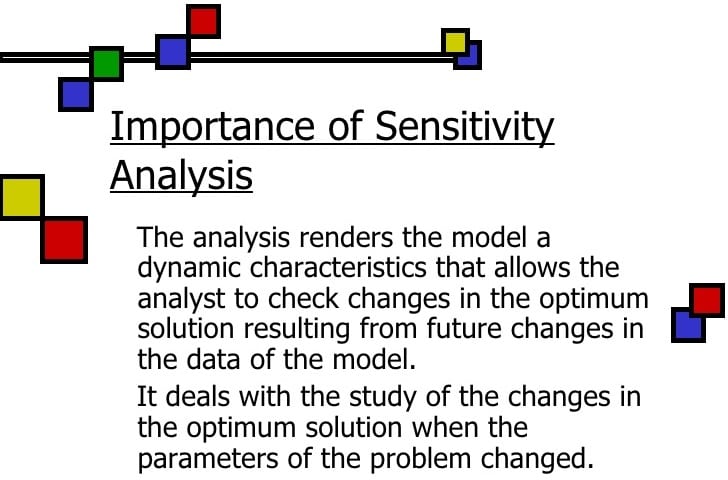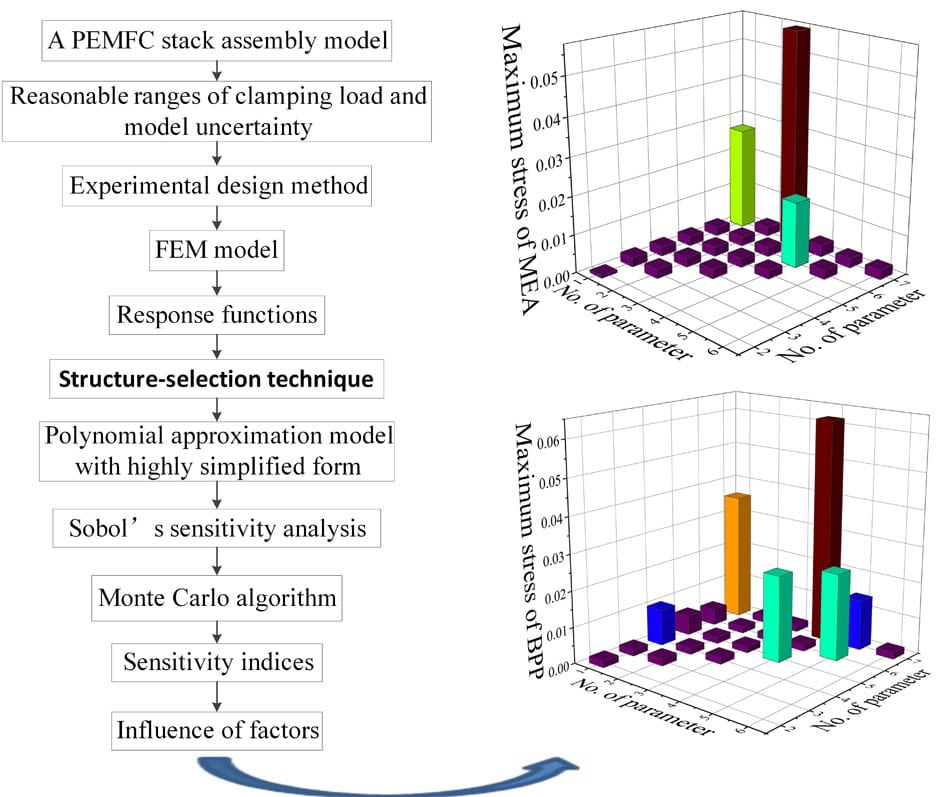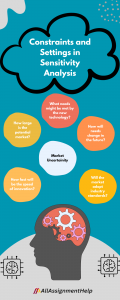Table of Contents
Sensitivity analysis is used by experts to assess how various values of a group of independent factors impact a particular dependent variable. It is a tool used by economists and financial analysts to estimate the impact of interest rates or forecast the share prices of businesses. However, if you are a student, learning more about sensitivity analysis can help you better comprehend market unpredictability.
Furthermore, to get the best results in the dynamic environment of data-driven decisions and complex models, it is essential to comprehend the influence of uncertainty. Sensitivity Analysis, sometimes referred to as a “magician’s wand”, helps you to decode the secrets buried in your data and identify the key factors that influence your outcomes. There is a lot to know about this type of analysis. Hence, one of our experts at All Assignment Help has created this blog where we will tell everything about sensitivity analysis.
So, let’s dive into the world of Sensitivity Analysis.
What is Sensitivity Analysis?

Sensitivity analysis is a technique to identify the many sources of input unpredictability that might contribute to the unpredictability of a system or model’s outputs. This method is used within some boundaries which depend on one or more input variables. It includes the effects that change in interest rates have on the bond prices.
Furthermore, it is also seen as similar to simulation analysis. It is a technique for forecasting a decision’s result when it is presented as a specific set of factors. With the creation of a set of variables, the analyst can identify how changes in a variable put an impact on the outcome.
Sometimes, it is also referred to as a “what-if” analysis. It can be used for every task or system. Moreover, it can be used to make decisions at all levels of an organization, from family holiday planning to corporate-level decisions such as Strategic Marketing Management Analysis.

Example of Sensitivity Analysis
Just imagine that Alex is a sales manager and he wants to understand the impact of customer traffic on overall sales. He made up his mind that sales are a process of price and transaction volume. One gadget is $100, and Alex sold 50 this year, and the total sale cost came out to be $5,000.
Alex was able to determine that there was a particular percentage of rising in customer traffic which led to a rise in the transaction volume as well. This info allowed him to make a financial model and sensitivity analysis. This can now tell him what will happen if the customer traffic grows by 5%, 10%, or up to 100%.
The rise in customer traffic by these percentages will also show the rise in transaction volume or total sales. There will be an increase in transaction volume as well with some amount of numbers concerning the percentage increase in customer traffic. Thus, now you can understand that here, sensitivity analysis showcases that sales are highly sensitive to all variations in customer traffic.
Formulas Used in Sensitivity Analysis
The basic formula used by analysts to determine how sensitive output variables are to changes in input variables is as follows:
Sensitivity = Percentage change in output / Percentage change in input
However, outputs can also be represented as a function if it is feasible to define the precise mathematical relationship between each independent variable and dependent variable:
f(x) = y, Where the independent variable (input) is “x” and the dependent variable (output) is “y”.
Also, the precise function formula varies based on the precise relationships between variables, which are particular to the case you are analyzing.
However, many students fail to solve sensitivity assignments that require the use of these formulas. They get stuck on how to apply the formula in the analysis. In such a case, they feel clueless and just think “I wish I could pay someone to do my assignment for me to get additional guidance on these formulas.
Steps Used to Conduct Sensitivity Analysis
Sensitivity analysis is a process that includes a number of organized stages to evaluate the effects of changing input parameters on a model’s or decision-makers output. The stages involved in performing a sensitivity analysis are listed below:
- First, the base case output, such as the NPV for a certain base case input value (V1), is established. This is the value for which the sensitivity is to be calculated. The model’s other inputs are maintained at their original values.
- After then, while keeping other inputs constant, the value of the output is computed at a new input value (V2).
- Calculate the percentage changes in the input and the output.
- The sensitivity is determined by dividing the output change in % by the input change in percentage.
This procedure of evaluating sensitivity for a different input to determine the sensitivity value for each input while holding the other inputs constant must be repeated. The implication is that the output is more sensitive to any change in the input the higher the sensitivity figure, and vice versa.
Constraints and Settings in Sensitivity Analysis

The parameters or problem constraints will determine the process used to conduct the sensitivity analysis. We will go over the most typical ones with you. The constraints or settings are as follows:
Computational expense
Sensitivity analysis is performed by running a possibly large model and sometimes. It is a sampling-based initialization. But, this can become an issue when-
- A single workout process of a model takes a particular amount of time like a few minutes, an hour, or may longer than that. This happens with much more difficult models.
- Various numbers of unknown inputs are present in the model. As inputs increase, so does sensitivity analysis.
Correlated inputs
This is one of the most commonly used sensitivity analysis methods. Although it presumes that model inputs are independent, there are situations when they can be tightly connected.
Nonlinearity
Sometimes, results based on linear regression can wrongly calculate sensitivity. It happens when the model’s depiction is nonlinear concerning the inputs.
Model interactions
Interactions happen when the disruption of two or more inputs one after another, causes a difference in the results greater than that of changing each of the inputs all alone. The effect of this constraint can be calculated by the total-order sensitivity index.
Multiple Outputs
Many models result in or output a bigger number of possibly time-dependent data. However, for those models in which the outputs are interrelated, it becomes harder to interpret the sensitivity measures.
Given data
In many cases, the person practicing has access to the model. But, in some cases, a sensitivity analysis must be done with “given data.”It is where the values of the model inputs can’t be chosen by the analyst.
However, you can also enroll yourself in an online course where you can learn all about sensitivity analysis. Moreover, you can opt for short-term or long-term courses which suit you the most. Also, if you find yourself stuck in your online course classes, you can hire an expert by asking “Take my online class for me” to get rid of the trouble. In this way, you will get your classes done without any issues while gaining some additional guidance from online class takers.
Applications of Sensitivity Analysis
Sensitivity analysis is a flexible and priceless tool with a wide range of applications in several industries. This potent approach finds application in a wide range of sectors, paving the way for success and precise decision-making in everything from engineering to company planning, environmental research to finance. Let’s explore some of the most important applications for sensitivity analysis.
Environmental
Computerized environmental models are widely employed in a wide range of research and other applications. It contains global climate models that are used for both forecasting short-term weather and long-term climate change. Moreover, computer models are now highly being used for environmental decision-making on a local scale like for examining the impact of a wastewater treatment plant on a flowing river, etc. The analysis may help to understand these phenomena.
Business
Sensitivity analysis can help in various circumstances related to business. It helps to:
- To compare various model architectures or to identify severe assumptions.
- Guide in for future data collections.
- Improve resources allotment.
- Increase the tolerance of produced parts in relation to parameter deviations.
Experts providing assignment help online will help you know more about the applications of sensitivity analysis in the business sector in more detail.
Multi-criteria decision making
Multi-criteria decision making or MCDM, examines the problem of choosing the best option from among competing options. Its underlying standards relate to significance weights.
These are only a handful of the numerous applications of Sensitivity Analysis that illustrate how important it is in various fields and companies’ decision-making processes.
Pitfalls in the Sensitivity Analysis
Sensitivity analysis is a useful tool, but it’s important to be aware of any difficulties that can show up while using it. Analysts and decision-makers can apply Sensitivity Analysis more efficiently and correctly understand the results by being aware of these hazards. Among the common pitfalls are:
- There are way too many model inputs that have to be analyzed. Screening is used to lessen the dimensionality.
- The model takes a longer period to run. But, Emulators are used to lessen the number of model runs that are needed.
- This analysis provides lesser information to make probability distributions for the inputs.
- If there is an unclear purpose of the analysis, then many variants of measures and statistical tests are applied to the problem, and therefore different factors rankings are gained.
- Too many model outputs are taken. However, this may be accepted for quality assurance of sub-models. This should be ignored when presenting the outputs of the overall analysis.
- It is also known as piecewise sensitivity. It is when someone performs financial statement analysis on one sub-model at an individual time. This method is nonconservative as it might oversee interactions within factors in different sub-models.
Therefore, sensitivity Analysis may be made more accurate and effective by being aware of these pitfalls, and ensuring that it is properly included in the decision-making process.
Conclusion
Sensitivity analysis is a tool that offers decision-makers assistance that goes beyond finding a fix for a problem. It gives the right amount of understanding to the issues related to the model being referenced. Finally, the decision-maker gains a good understanding of how responsive the best solution he selected is to any changes in the input values of one or more parameters.
However, if you need any further help with sensitivity analysis, you can count on our experts. They will guide you from the start to the end by explaining the process. Also, if you are learning sensitivity analysis through online classes and need someone to help you with online exams to get an A grade in it, you can hire our experts. Just by hiring our online exam helpers, you can get stress-free from the trouble of asking yourself “Where should pay someone to take my online exam for me”. We have the best team of experts to guide you on this topic.
FAQs
| Q: What standard methods are used in sensitivity analysis? A: One-way sensitivity analysis, tornado diagrams, and Monte Carlo simulations are just a few of the standard methods used in sensitivity analysis. However, these techniques examine how input variations affect model results, providing decision-makers with insightful information that helps them successfully understand system dynamics. |
| Q: Is it difficult to perform sensitivity analysis? A: The complexity of the sensitivity analysis depends on the model complexity and the approach used. Simple one-way analyses are easy to understand, but more complex methods like Monte Carlo simulations could require more computing power. It is approachable and rewarding with the right tools and knowledge. |

